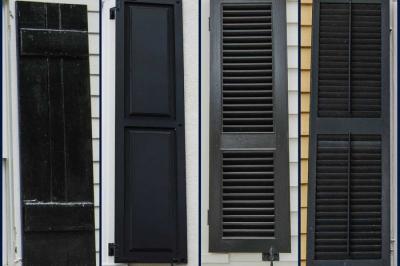If you were able to walk down many streets of an 18th- or early 19th-century English town or city, one of the things which could strike your 21st-century sensibilities as odd might be the rank upon rank of heavy panel shutters hung on all the ground floor window openings and the total absence of shutters on the windows above.
Of course, these shutters were not hung for looks, but rather function; providing privacy, security and protection for all that expensive window glass.
Meanwhile, in the more extreme climate of the Canadas, property owners had not only carried forward English functional considerations but expanded them to encompass their new reality.
Here seasonal weather conditions ranged from hot to very cold. As a result, not only did raised panel or the cheaper plank shutters provide privacy, security and protection, but also assisted in insulating the home during those cold nights and winter storms.
This was all well and fine during the chilly weather, but as the weather warmed, closing the shutters could create stifling conditions in the house. Since heat rises, this was particularly true on the second floor of a home where the family would typically sleep. So, what could be done?
While the security concern was far less important on the second floor, protection of your very costly window panes against windblown accidents was still vital and, since the advent of Victorian draperies was off in the future, privacy ranked paramount.
The successful answer came in the form of the louvered shutter. By replacing the raised panel with a series of wooden slats fixed in place at an angle, one could still achieve protection and privacy while allowing air movement.
By the end of the 18th century, it had become fairly common practice on both city and status homes to see raised panel shutters fulfilling their traditional functions on the first floor and fixed louvered shutters on the windows above.
There was only one thing wrong with this picture; because the slats in the louvered shutters remained partially open year-round the insulating qualities of the raised panel were largely lost.
Human ingenuity addressed this circa 1840 with the introduction of operable louvered shutters. Now, one could open or close the slats in the shutters depending on seasonal requirement. Despite not performing as well as the panel shutter, simple convenience made the new shutters wildly popular and they became “the” standard for 19th-century windows.











